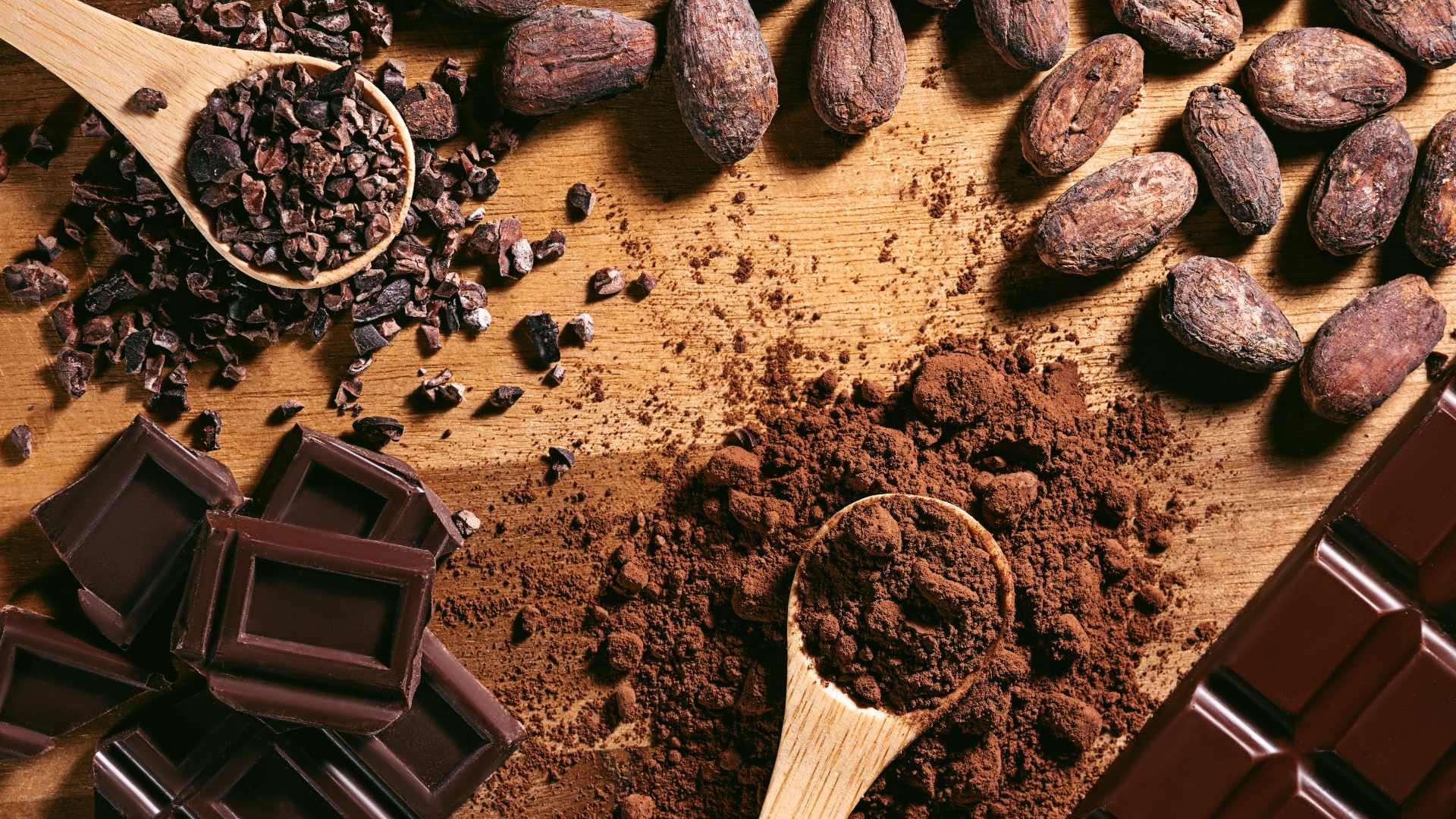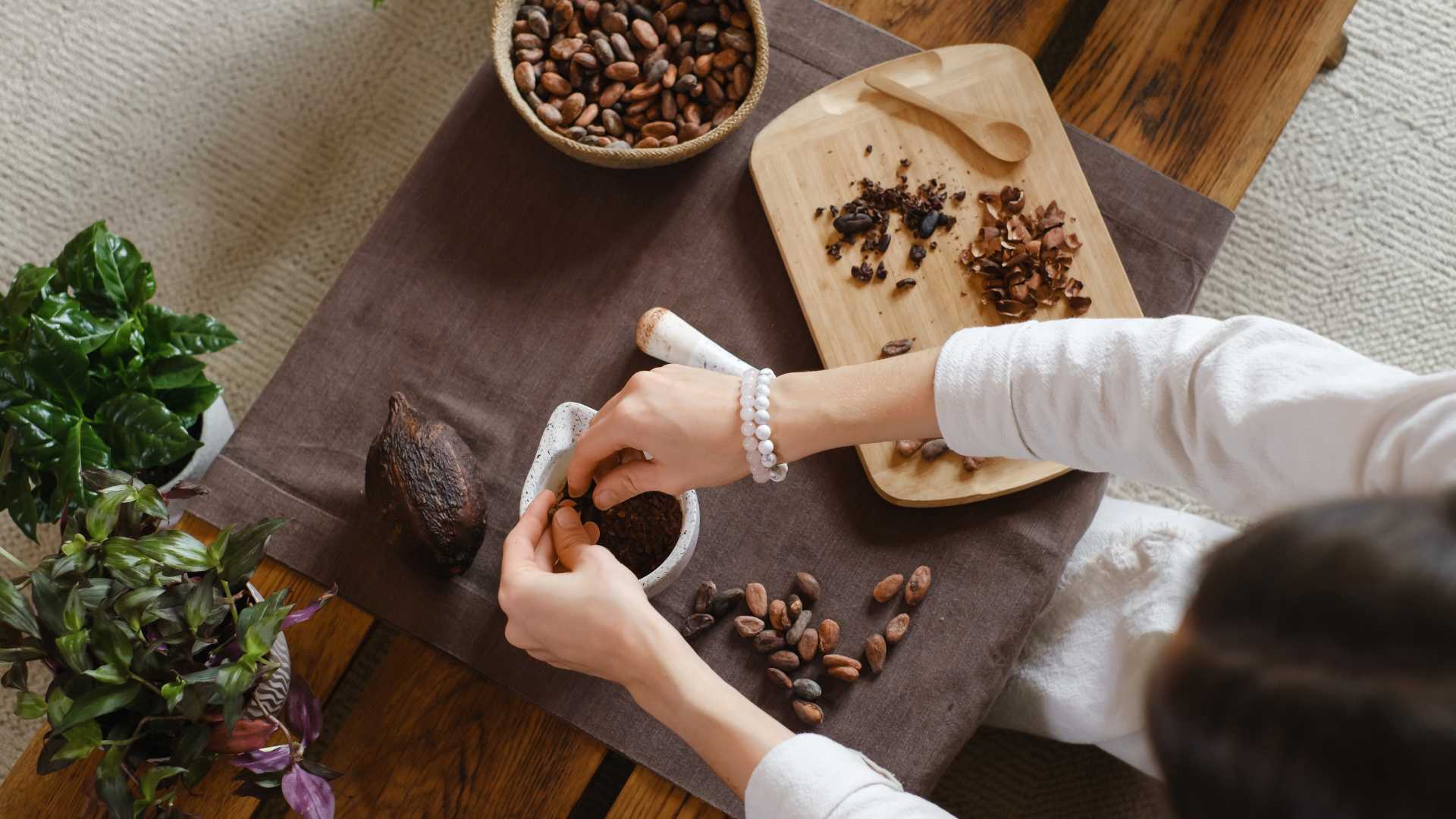Cacao, the core ingredient in chocolate, has a fascinating history and a complex composition that offers numerous health benefits. Yet, many wonder about its stimulant properties, particularly whether it contains caffeine. This article will examine cacao's unique qualities, compare it with caffeine, and examine its nutritional benefits.
Summary
Cacao, the main ingredient in chocolate, contains small amounts of caffeine and a mild stimulant called theobromine. While cacao does have caffeine, it is significantly less than that found in coffee or tea. Theobromine provides a gentler, more sustained energy boost without the intense effects of caffeine, making cacao a unique and beneficial addition to the diet. Besides its stimulating properties, cacao is rich in antioxidants, essential minerals, and compounds that support heart health, enhance mood, and promote digestive wellness. Moderation is key for those sensitive to stimulants or managing their caffeine intake.
The Journey Of The Cacao Bean
The cacao bean, sourced from the Theobroma cacao tree, plays a pivotal role in the production of chocolate. Let's discuss its origins, cultivation, and the various stages it undergoes before becoming the beloved chocolate we enjoy.
Origins And Cultivation
Theobroma cacao thrives in tropical regions of Central and South America in warm, humid environments with temperatures ranging from 18 to 32 degrees Celsius. Ancient civilisations such as the Olmecs, Mayans, and Aztecs revered cacao. They used it as a currency and in ceremonial drinks, often mixed with spices and honey.
The Harvesting Process
Harvesting cacao is a labour-intensive task that requires precision to avoid damaging the beans. Once harvested, the pods reveal the cacao beans encased in a sweet, white pulp. These beans then undergo a necessary fermentation process, leaving them to ferment in containers for several days. This fermentation enhances the flavour, leading to the rich taste we associate with chocolate.
Nutritional Composition

Cacao beans are rich in antioxidants, fibre, and essential minerals such as magnesium, iron, and zinc. One of the most significant compounds found in cacao is theobromine, a mild stimulant that differs from caffeine in its effects on the body.
Culinary Applications
Cacao beans are incredibly versatile in the culinary world. They can be consumed as raw nibs or processed into cocoa powder, butter, and chocolate. Each form of cacao contributes a distinct flavour and texture to a wide array of sweet and savoury dishes.
Cacao Vs. Caffeine: A Comparative Analysis
While cacao and caffeine are both known for their stimulating properties, they differ significantly in their sources, effects, and the compounds they contain.
Understanding Cacao And Caffeine
Caffeine, commonly found in coffee, tea, and energy drinks, is a powerful stimulant that quickly enhances alertness and reduces fatigue. Conversely, cacao contains theobromine, a milder stimulant with a more gradual and sustained effect.
The Effects Of Cacao’s Theobromine
Theobromine, the primary stimulant in cacao, offers a more subtle and enduring boost in mood and alertness than caffeine. Unlike caffeine, which can cause jitters and crashes, theobromine provides a gentle uplift without these side effects.
Caffeine's Immediate Impact
Caffeine quickly acts on the central nervous system, blocking adenosine, a neurotransmitter that promotes sleep. This leads to increased focus and energy, but when consumed in large quantities, it can also result in irritability and insomnia.
The Presence Of Caffeine In Cacao
Although theobromine is the dominant stimulant in cacao, it does contain small amounts of caffeine. However, the caffeine content in cacao is much lower than in coffee or tea. For instance, dark chocolate may contain about 12 milligrams of caffeine, whereas an 8-ounce cup of coffee typically contains 95 milligrams.
Theobromine: Cacao’s Unique Stimulant
While theobromine is related to caffeine, it offers distinct benefits that make cacao a unique and enjoyable stimulant.
The Structural Similarity To Caffeine
Theobromine and caffeine belong to the xanthine family. They share similar structures but differ in their effects on the central nervous system. Theobromine provides a more balanced and lasting well-being without caffeine's sharp peaks and troughs.
The Gentle Effects Of Theobromine
Theobromine works gradually, enhancing mood, promoting relaxation, and inducing a mild euphoria. Its diuretic properties are also less pronounced than caffeine's, making it a gentler option for those sensitive to stimulants.
Cardiovascular Benefits
Theobromine supports cardiovascular health by relaxing blood vessels, improving blood flow, and lowering blood pressure. Its antioxidant and anti-inflammatory properties also protect the heart and blood vessels from damage.
Theobromine Content In Cacao Products
Dark chocolate, with its higher cacao content, typically contains more theobromine than milk chocolate. Those seeking the benefits of theobromine should opt for products with a higher cacao content.
Consumption In Moderation
While theobromine is generally well-tolerated, moderation is key. Excessive consumption of cacao products can lead to insomnia or digestive discomfort. By being mindful of our intake, we can enjoy the gentle uplift and health benefits of theobromine.
Cacao's Caffeine Content: What To Expect
Cacao contains caffeine but in much smaller quantities than coffee and tea. Let's compare cacao's caffeine content and consider what it means for those sensitive to stimulants.
A Subtle Presence Of Caffeine
Cacao's caffeine content is subtle, offering a mild stimulant effect that complements its rich flavours. This makes cacao a more gentle option for those who enjoy the taste of chocolate but wish to avoid the stronger effects of caffeine.
Comparing Caffeine Levels

To put it into perspective, a 1-ounce piece of dark chocolate contains about 12 milligrams of caffeine. This is significantly less than the 95 milligrams in a typical cup of coffee or the 15 to 70 milligrams in a cup of tea.
The Synergy Of Theobromine And Caffeine
Caffeine works alongside theobromine in cacao, creating a balanced effect that enhances mood and alertness without causing the highs and lows often associated with caffeine alone.
Variations In Cacao Products
Different cacao products have varying levels of caffeine. Dark chocolate generally has more caffeine due to its higher cacao content, while milk chocolate has less. White chocolate, made from cocoa butter, contains only trace amounts of caffeine.
Managing Caffeine Intake
Knowing the caffeine content in cacao products is important for those sensitive to caffeine. Opting for lower cacao content or white chocolate can help manage caffeine intake while still enjoying the pleasures of chocolate.
The Health Benefits Of Cacao
Beyond its delightful taste, cacao offers a range of health benefits that make it a valuable addition to a balanced diet.
Rich In Antioxidants
Cacao is packed with antioxidants, which protect the body from oxidative stress and inflammation. These antioxidants, such as flavonoids and polyphenols, are vital in maintaining overall health and preventing chronic diseases.
Supports Heart Health
The flavonoids in cacao contribute to cardiovascular health by relaxing blood vessels, improving circulation, and reducing blood pressure. This supports a healthy heart and lowers the risk of heart disease.
Enhances Mood And Cognitive Function
Cacao contains compounds like phenylethylamine (PEA) and anandamide, which enhance mood and promote happiness and relaxation. The mild stimulants theobromine and caffeine also help improve cognitive function and reduce fatigue.
Provides Essential Minerals
Cacao is a rich source of essential minerals, including magnesium, iron, zinc, and copper. These minerals support various bodily functions, from muscle and nerve function to immune health and energy production.
Promotes Digestive Health
The fibre in cacao aids in digestive health by promoting regular bowel movements and supporting a healthy gut. This helps maintain overall digestive wellness and contributes to a balanced diet.
Conclusion
Cacao, while containing small amounts of caffeine, is primarily defined by its unique stimulant, theobromine. This compound offers a gentler, more sustained energy boost than caffeine, making cacao a delightful and beneficial addition to your diet. Whether you're savouring a piece of dark chocolate or enjoying a cacao-infused dish, you're not just indulging in a treat but also reaping the benefits of its rich nutritional profile.
Frequently Asked Questions
Yes, cacao contains caffeine, but in much smaller amounts than coffee. It also contains theobromine, a stimulant similar to caffeine but with a milder effect on the central nervous system.
A typical 8-ounce cup of coffee contains about 95 milligrams of caffeine, while a bar of dark chocolate contains around 12 milligrams.
If you are sensitive to caffeine, it is advisable to consume cacao in moderation. Opting for products with lower cacao content can help manage your caffeine intake.
Yes, cacao nibs generally contain more caffeine than cacao powder because they are less processed and closer to the raw cacao bean.
Cacao can be a good option for those looking to reduce their caffeine intake, as it contains significantly less caffeine than coffee or tea. However, theobromine provides a mild stimulant effect.

